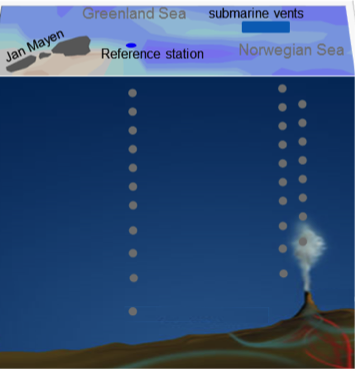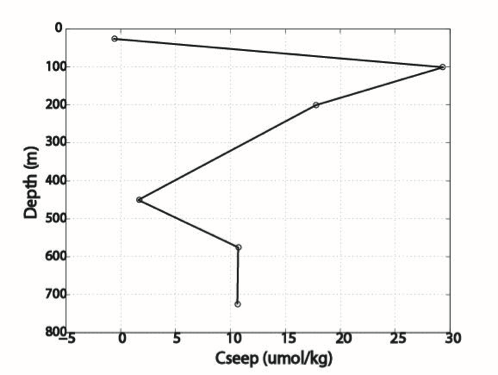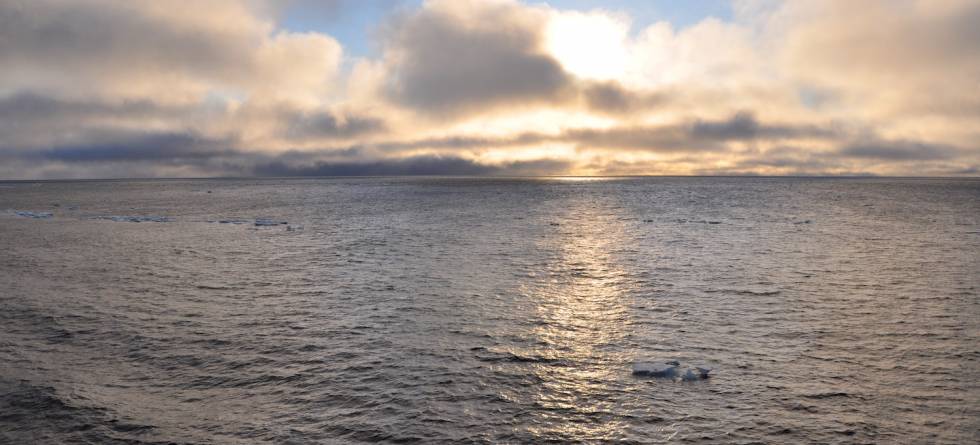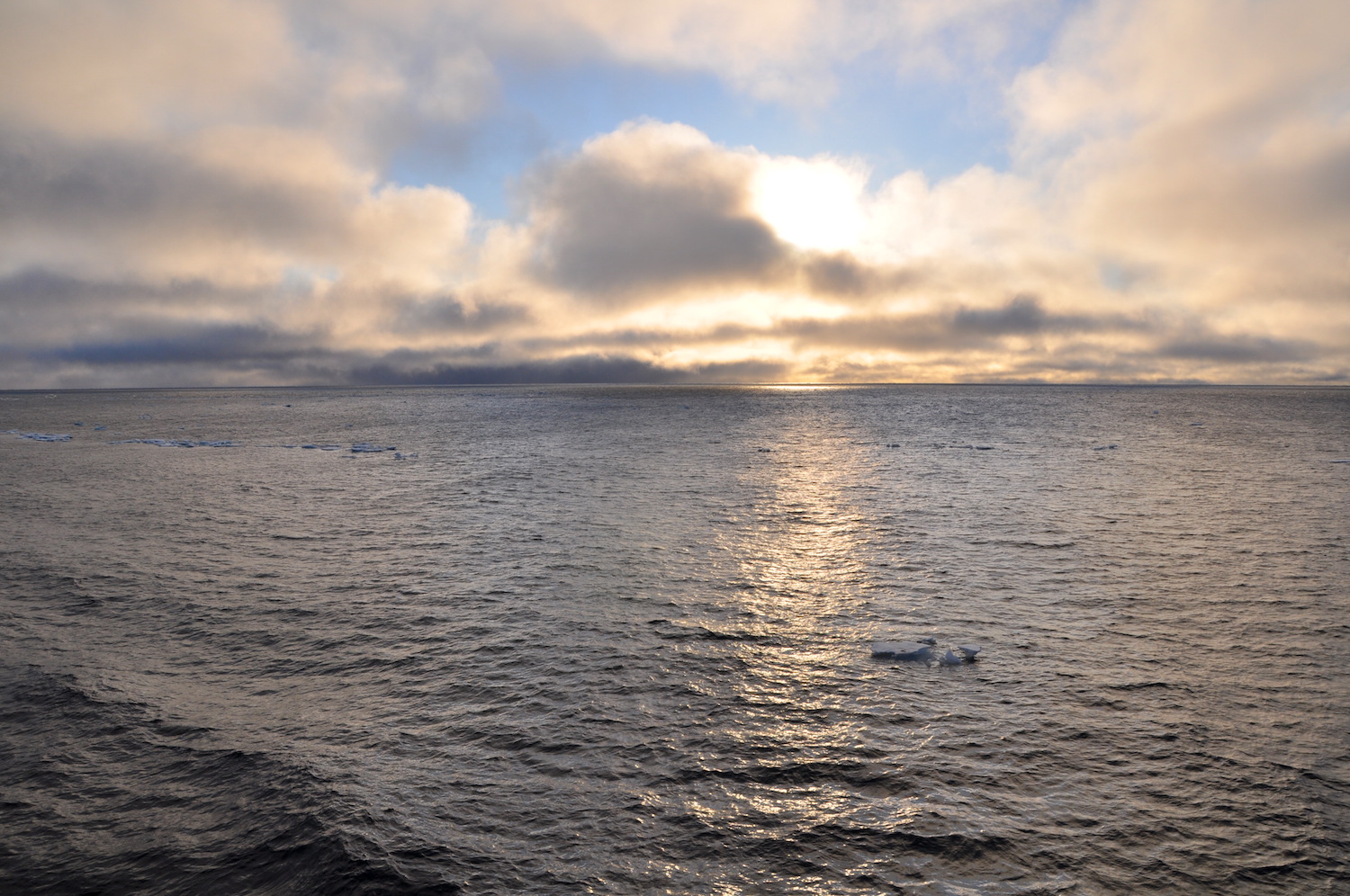By Abdirahman M. Omar, UNI Research Climate & Bjerknes Centre.
A research team at the University of Bergen, UNI Research AS and the Bjerknes Centre, has developed a monitoring technique which is thought to be sensitive enough to detect if a fraction of the CO2 stored in the Sleipner subsea storage complex in the North Sea would leak out into the water column and diluted in an area of several thousand square meters.
The new study addresses the immense scientific and technological challenge of how to detect and quantify the effect of a leak occurring from a CO2 source under the seabed into the seawater. This is difficult because the CO2 spreads rapidly by dissolution, dilution and currents in the ocean especially in areas with deeper water column and / or greater water movements and mixing.
To circumvent these difficulties, the study breaks with the commonly used “concentration based monitoring”; a technique which one monitors seawater CO2 gas concentration hoping that leakage will produce values that are well above natural background variations. Unfortunately, however, the signal expected from leakage is very often minute compared to natural background variations due to additional natural and/or anthropogenic processes. Therefore, the new study uses a "process-based monitoring”; a technique where one isolates the signal of subsea CO2 seepage by applying knowledge of (and removing the effect of) all other processes that influence seawater CO2 content of the study area.
The first study describing this technique, led by PhD student Helle Botnen, has been recently published in the journal Limnology and Oceanography.
The study is innovative in several respects. Firstly, instead of performing an expensive in situ CO2 leakage experiment, which might have raised ethical questions, this study used field data from around two CO2-rich subsea hydrothermal vents and a seepage-free reference station, all in the Norwegian Sea near the Jan Mayen Island (Figure 1a). For both types of sites, we have calculated a theoretical background carbon concentration in which all natural variations have been estimated from other indicators and removed so that the remaining variability is ascribed solely to CO2 seepage. By subtracting the “theoretical background concentration” for the reference location from that of the leaking i.e. venting location we have been able to estimate the excess carbon which has been added to the seawater by the subsea hydrothermal vents.
We found that the total dissolved inorganic carbon (DIC) in the seawater surrounding the vents was on average 12 micro moles Carbon per kg seawater (µmol kg-1) higher compared to samples obtained from the reference station. For comparison, the background DIC concentration in the Norwegian Sea is around 2150 µmol kg-1 with natural variations of about 100 - 150 µmol kg-1. The observed excess DIC was most significant between 100 m and 200 m but was noticeable in all depths with the exception of the upper 10-20 m (Figure 1b). The strong signal observed in 100 – 200 m suggests that the warm and CO2-rich fluid venting from the seafloor at 700 m is lighter than the ambient cold deep water and, thus, it rises and accumulates higher in the water column where density is similar to that of the venting fluid.


The method itself is not new, but has been originally developed to detect and quantify the minute DIC changes resulting from the oceanic uptake of excess CO2 from the atmosphere. Thus, the study is innovative in that it optimizes existing methodology and technology for a new application. This is a small, but important and necessary step towards bridging the gap between the fields of marine carbon cycle research which has advanced considerably in the past decades and subsea carbon sequestration which is at the development stage.
Owing to the high sensitivity it showed during this study, we believe the method is promising for the monitoring (detection and quantification) of CO2 leakage into the water column from subsea CO2 storage. Through highly simplified calculations we estimated that the ocean volume around the hydrothermal vents (≈1 km2 with 700 m depth) contained a CO2 inventory of about 2.6 108 g CO2, which is five orders of magnitude less than the CO2 expected to have accumulated in the Sleipner storage complex, 1.83 1013 g CO2, since the start of the project in 1996.
We therefore believe that the present method is sensitive enough to reveal possible DIC change that would result in if a tiny fraction of the CO2 stored in Sleipner is leaked into the water column and diluted into an area several thousand meters long. However, a good deal of work remains before the preset method can lay the basis for operational monitoring of subsea CO2 leakage in the water column. For instance, the present work required resource intensive discrete sampling and analyses of the seawater immediately around/above a known CO2 seep i.e. hydrothermal vents. The next step is to optimize the technique for in situ autonomous instrumentation which can be used for location and/or 3-dimentional mapping of CO2 seepage into the water column.
Reference:
Botnen, H. A., Omar, A. M., Thorseth, I., Johannessen, T. and Alendal, G. (2015), The effect of submarine CO2 vents on seawater: Implications for detection of subsea carbon sequestration leakage. Limnology and Oceanography, 60: 402–410. doi: 10.1002/lno.10037


